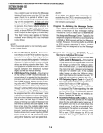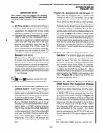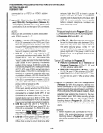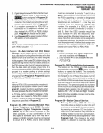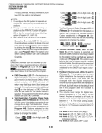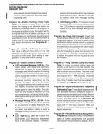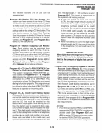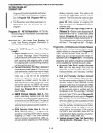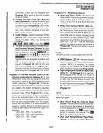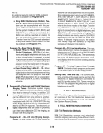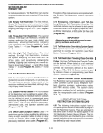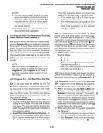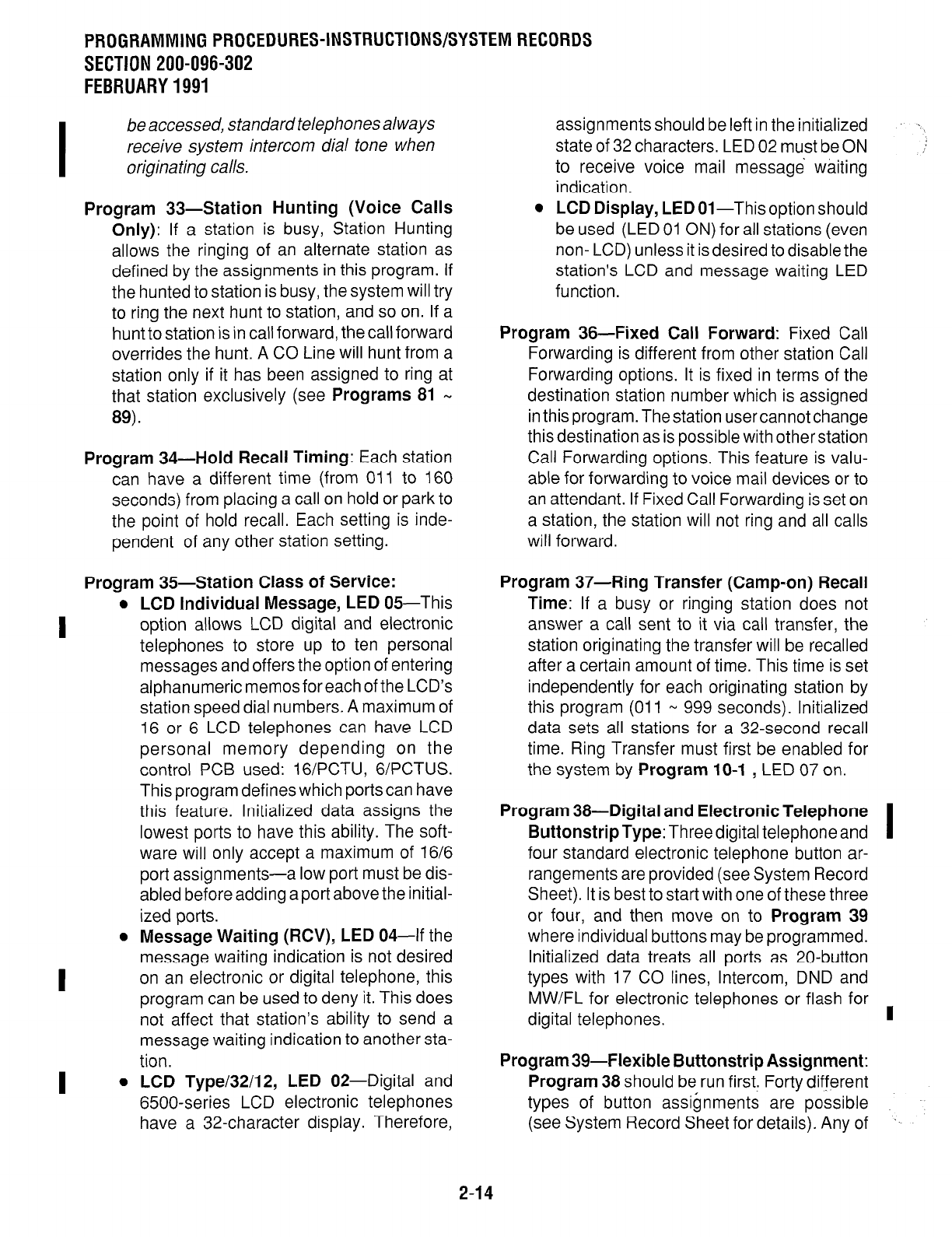
SECTION 200-096-302
FEBRUARY1991
I
be accessed, standard telephones always
receive system intercom dial tone when
originating calls.
Program 33-Station Hunting (Voice Calls
Only):
If a station is busy, Station Hunting
allows the ringing of an alternate station as
defined by the assignments in this program. If
the hunted to station is busy, the system will try
to ring the next hunt to station, and so on. If a
hunt to station is in call forward, the call forward
overrides the hunt. A CO Line will hunt from a
station only if it has been assigned to ring at
that station exclusively (see
Programs 81 u
89).
Program 34-Hold Recall Timing:
Each station
can have a different time (from 011 to 160
seconds) from placing a call on hold or park to
the point of hold recall. Each setting is inde-
pendent of any other station setting.
Program 35-Station Class of Service:
l
LCD Individual Message, LED
05-This
I
option allows LCD digital and electronic
telephones to store up to ten personal
messages and offers the option of entering
alphanumeric memosforeach of the LCD’s
station speed dial numbers. A maximum of
16 or 6 LCD telephones can have LCD
personal memory depending on the
control PC6 used: lG/PCTU, G/PCTUS.
This program defines which ports can have
this feature. Initialized data assigns the
lowest ports to have this ability. The soft-
ware will only accept a maximum of 16/6
port assignments-a low port must be dis-
abled before adding a port above the initial-
ized ports.
l
Message Waiting (RCV), LED
04-If the
message waiting indication is not desired
I
on an electronic or digital telephone, this
program can be used to deny it. This does
not affect that station’s ability to send a
message waiting indication to another sta-
tion.
I
l
LCD Type/32/12, LED
OP-Digital and
6500-series LCD electronic telephones
have a 32-character display. Therefore,
PROGRAMMINGPROCEDURES-INSTRUCTIONS/SYSTEMRECORDS
assignments should be left in the initialized
state of 32 characters. LED 02 must be ON
to receive voice mail message waiting
indication.
l
LCD Display, LED
01-This option should
be used (LED 01 ON) for all stations (even
non- LCD) unless it is desired to disable the
station’s LCD and message waiting LED
function.
Program 36-Fixed Call Forward:
Fixed Call
Forwarding is different from other station Call
Forwarding options. It is fixed in terms of the
destination station number which is assigned
in this program. The station usercannot change
this destination as is possible with other station
Call Forwarding options. This feature is valu-
able for forwarding to voice mail devices or to
an attendant. If Fixed Call Forwarding is set on
a station, the station will not ring and all calls
will forward.
Program 37-Ring Transfer (Camp-on) Recall
Time:
If a busy or ringing station does not
answer a call sent to it via call transfer, the
station originating the transfer will be recalled
after a certain amount of time. This time is set
independently for each originating station by
this program (011 N 999 seconds). Initialized
data sets all stations for a 32-second recall
time. Ring Transfer must first be enabled for
the system by
Program
IO-1 , LED 07 on.
Program 38-Digital and Electronic Telephone
Buttonstrip Type:
Three digital telephone and
four standard electronic telephone button ar-
rangements are provided (see System Record
Sheet). It is best to start with one of these three
or four, and then move on to
Program 39
where individual buttons may be programmed.
Initialized data treats all ports as 20-button
types with 17 CO lines, Intercom, DND and
MW/FL for electronic telephones or flash for
digital telephones.
Program 39-Flexible Buttonstrip Assignment:
Program
38 should be run first: Forty different
types of button assignments are possible
(see System Record Sheet for details). Any of
2-14



